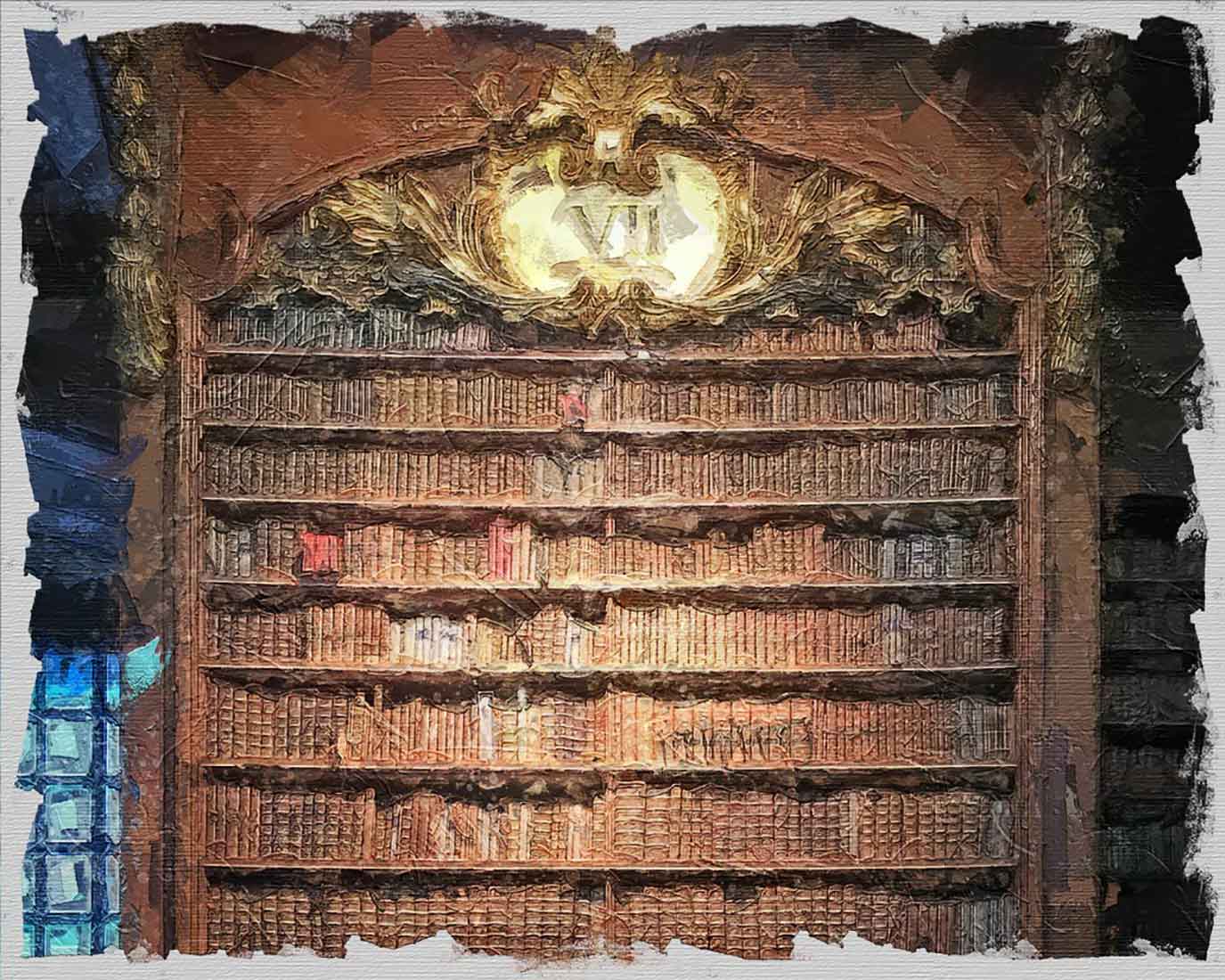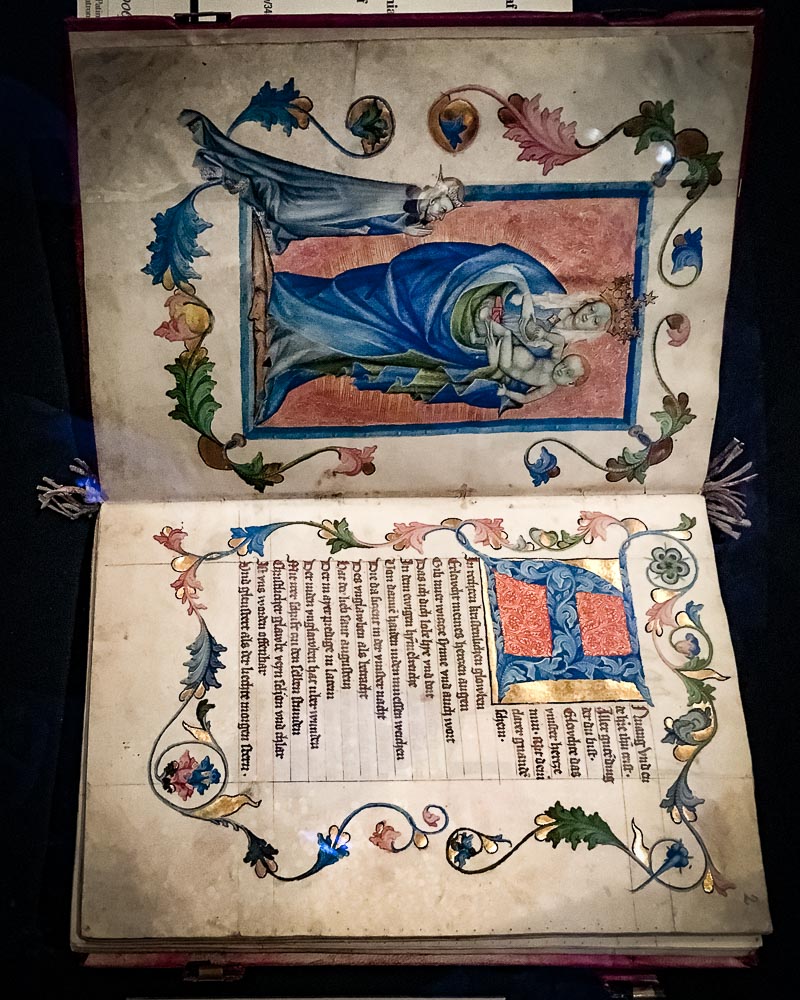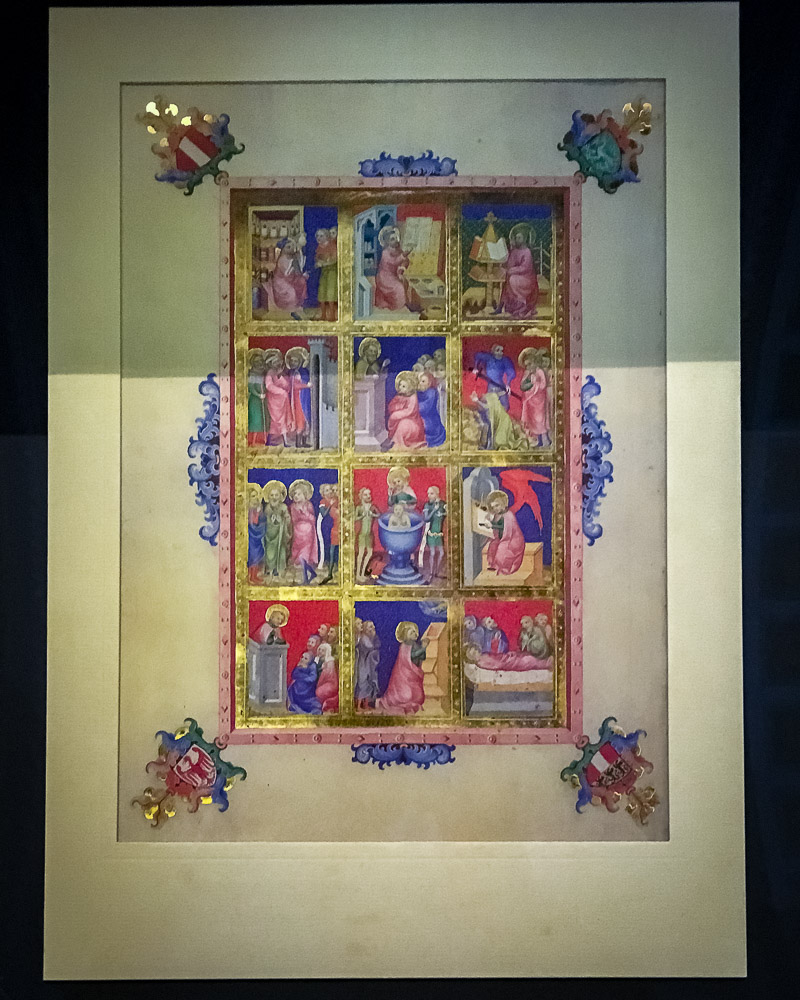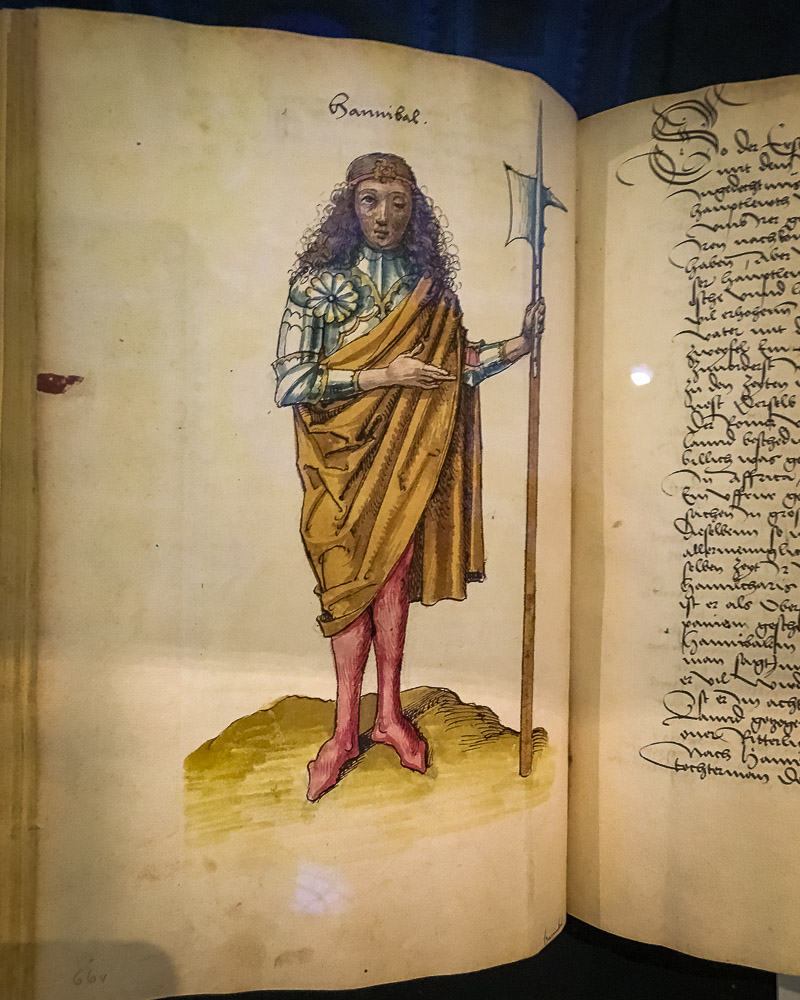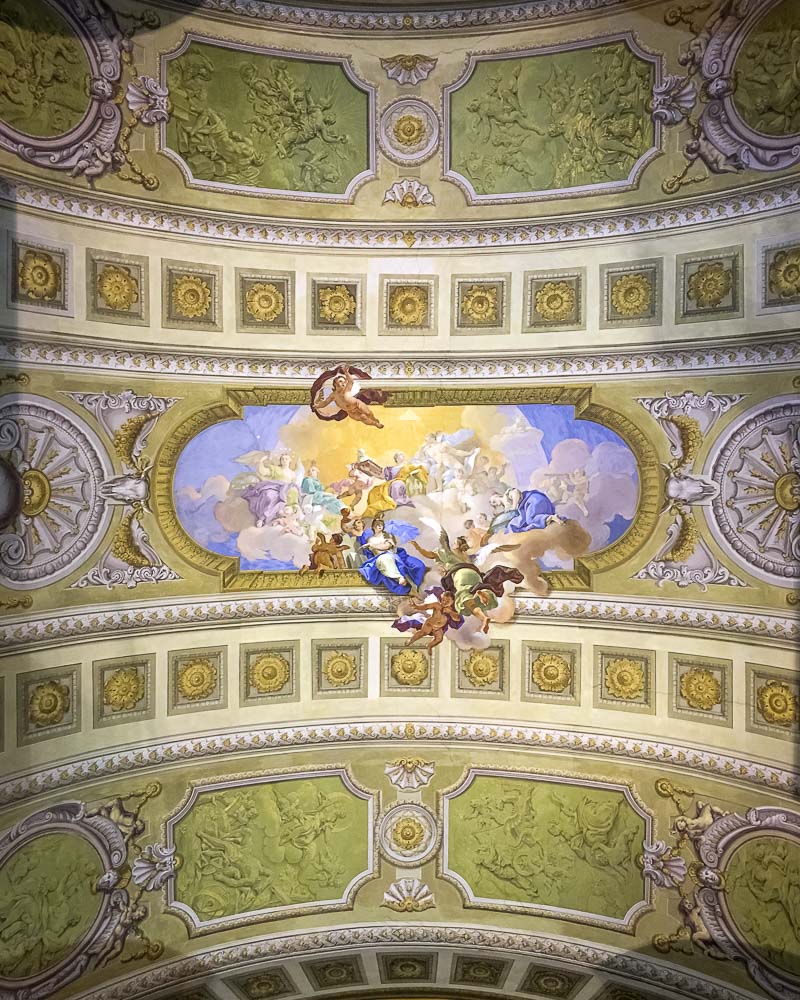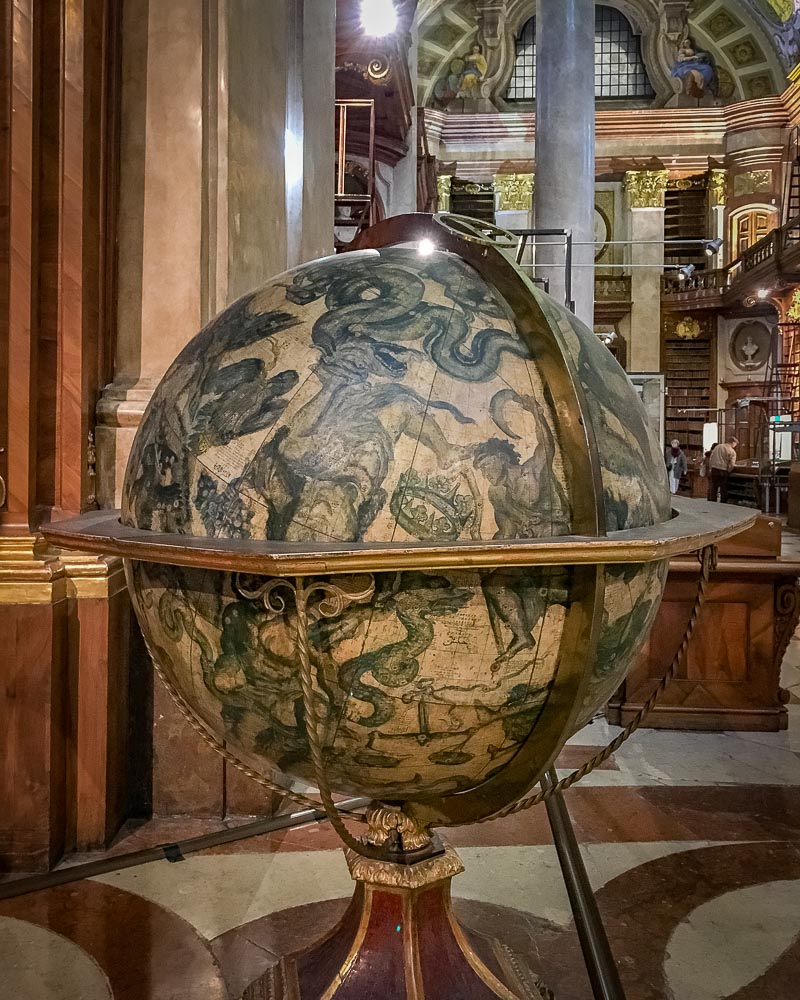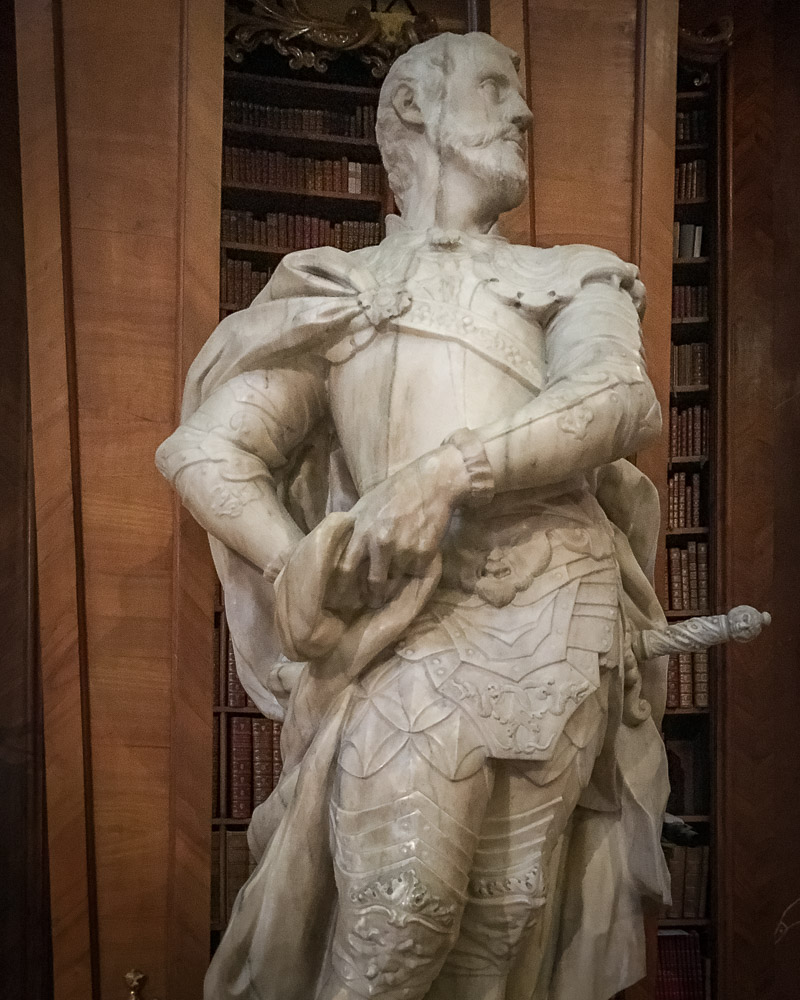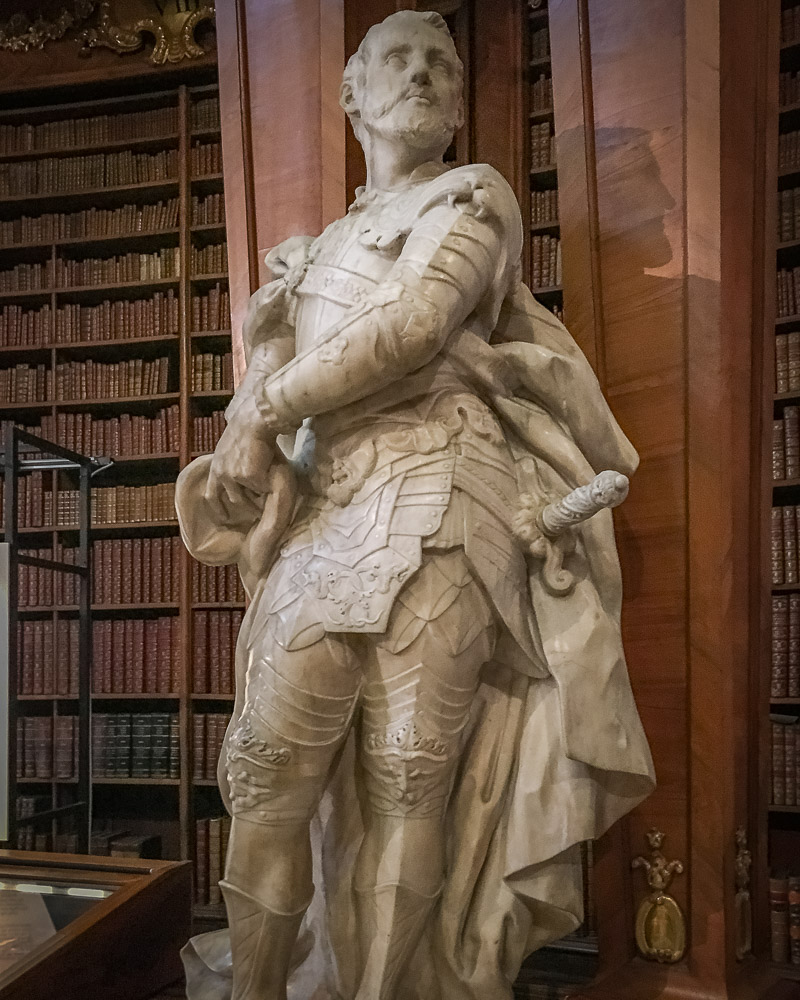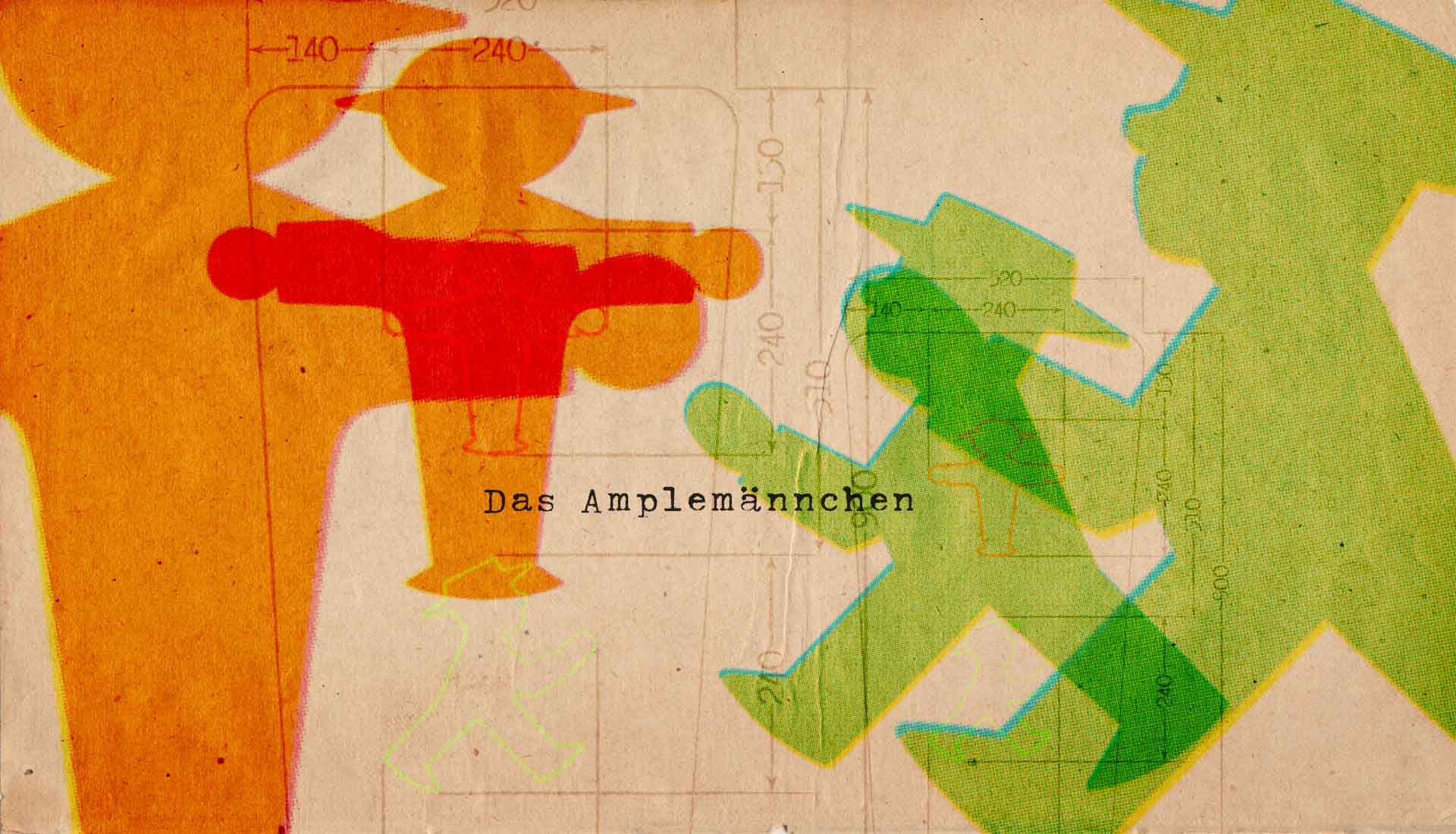fter finding the café - we are warm and somewhat caffeinated. We continue our walking exploration of the city. Passing the Spanish Riding School, Olaf points out that I should return later in the week to take in a show. I make a mental note. It is beginning to rain now and as luck would have it, we were just admiring the Austrian National Library. "Do you want to go inside?" Olaf asks. I do - I am a bit cold and not looking forward to getting wet. Also, we see so many of these buildings from the outside that I am interested to see the inside. We pay the entrance fee and step into the warmth. It is not possible to be prepared for the sight of this "library."
The Austrian National Library is the largest library in Austria, with more than 12 million items in its various collections. Founded by the Habsburgs, the library was originally the Imperial Court Library – the change to the current name occurred in 1920, following the end of the Habsburg Monarchy.
The institution has its origin in the imperial library of the Middle Ages. As a connoisseur of art, the Austrian Duke Albert III moved the books of the Viennese vaults into a library during the Medieval period. He also founded a royal workshop for illustrating manuscripts. Indeed, the oldest book on record at the library, a 1368 illustrated manuscript of four Gospels of the Bible – the 1368 golden Holy Gospels – was owned by Albert III.

The library is home to 200,000 books dating from 1501 until 1850 and many of them reflect the grandeur of the building which house them. The books of the court library were originally stored in the Minorite Monastery in Vienna from 1578 and from in the Hofburg from 1623-1630. In 1681, the emperor built a library but it was destroyed before completion during the Second Turkish Siege. Finally, a library was completed in 1726 – the State Hall is part of this building. The wing was originally freestanding but now it connects the Reitschultrakt and the Augustinertrakt, both of which date from the 1760s. As a universal library of the time, the library has one of the most valuable book collections in the world.
The Prunksaal (State Hall) is the central structure of the old imperial library. The ceiling frescoes reflect, among other things, that the books were divided thematically according to whether they belong to the thematic area of war or that of peace.
The Copola Frescoes in the State Hall were created by the court artist who worked on them from 1726-1730. The fresco in the cupola depicts the apotheosis, the “deification” of Emperor Charles VI. In the middle we see Charles VI in all his glory, with pyramid and laurel wreath in his hands, while below that is a golden medallion with a portrait of the emperor supported by Apollo and Hercules. Beneath that and around the sides are numerous other symbols of the magnificence of the House of Habsburg as well as several types of allegorical figures that meet in a complicated theme to symbolize the virtues of the Habsburgs and the wealth of their domains.
During the reign of empress Maria Theresia, cracks started appearing in the dome, prompting the court architect to strengthen the dome with an iron ring and two supporting pillars. The memorial fresco of Gran (in which the trace of a tear can be seen) was restored.
The State Hall is also home to four globes in the center rotunda of the library – two earth globes (Erdglobus) and two depicting the sky (Himmelglobus). They are quite beautiful even if somewhat erroneous.
The larger-than-life marble statue in the oval-shaped center of the State Hall represents Emperor Charles VI as “Hercules Musarum” and dates back to 1735. The other marble statues depict Austrian and Spanish Habsburgs.
The library is beautiful and awe inspiring but we are getting hungry. We hope the rain shower is done but either way, we leave the glory of the library and step out into the grey day to look for some lunch.


